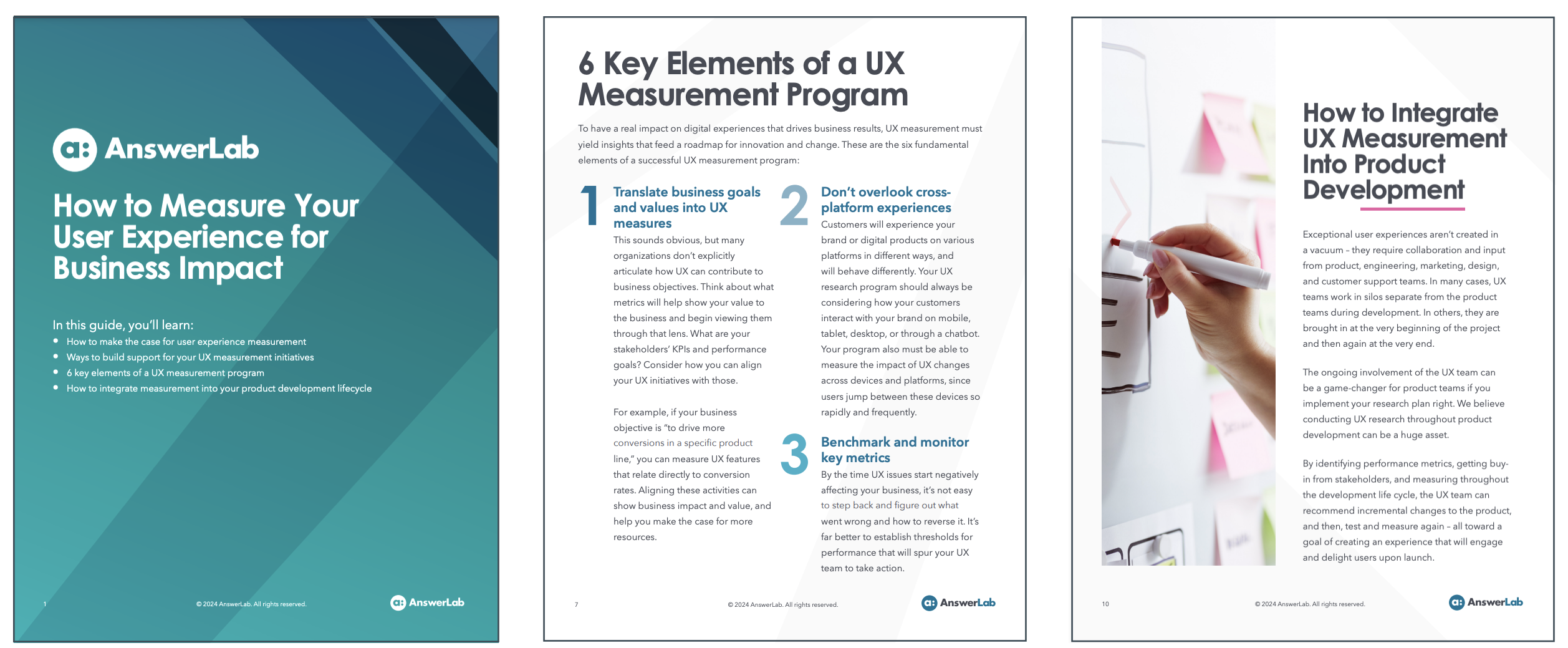There’s little doubt that your customer experience affects the bottom line. But understanding the impact of the many digital interactions that lead to business results is a complex undertaking. When the data indicates there are problems with your digital performance, it can be difficult to isolate what’s causing them and identify solutions without effective UX measurement.
To help you, we've created a new resource from our team that outlines how to successfully tackle UX measurement.


Measuring your user experience is the key to understanding its business impact.
In this resource from the AnswerLab team, you’ll discover how to:
- Demonstrate the value of your UX initiatives to top executives
- Make the case for UX measurement across your organization
- Build or refine your UX measurement program using 6 key elements
- Integrate UX successfully into every step of the product development lifecycle